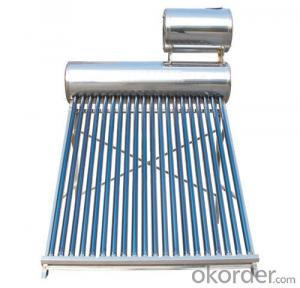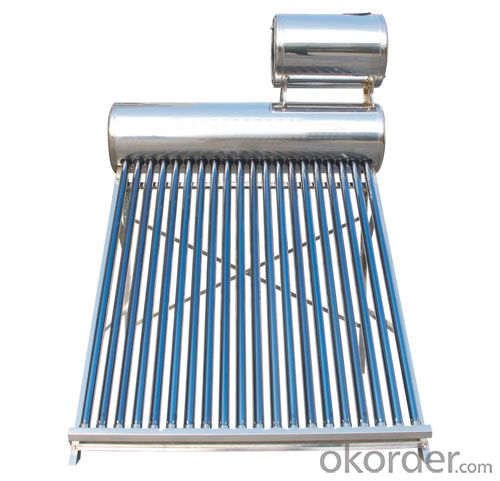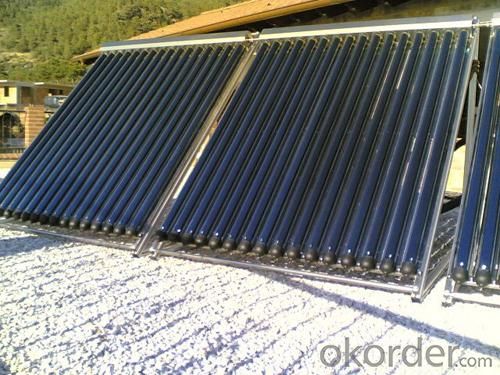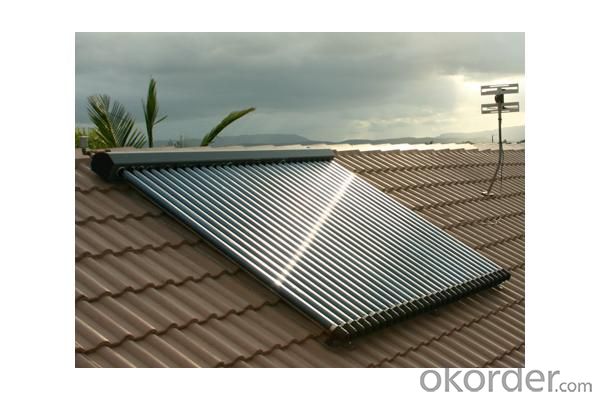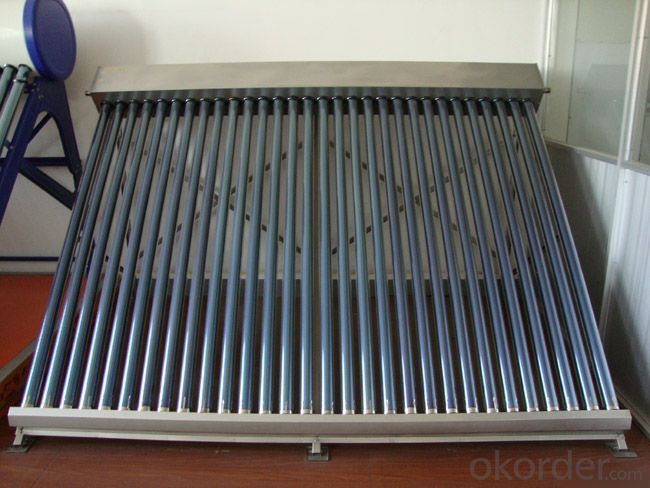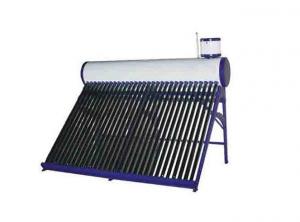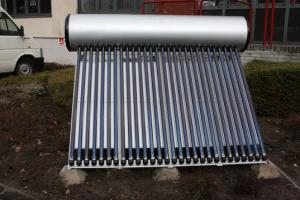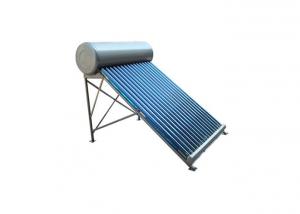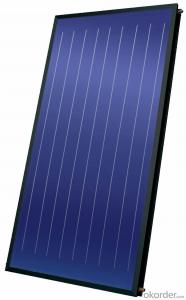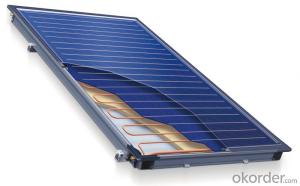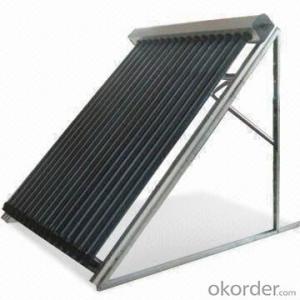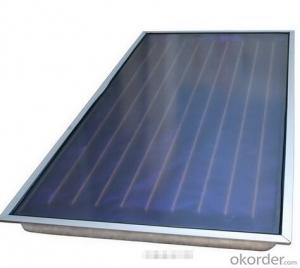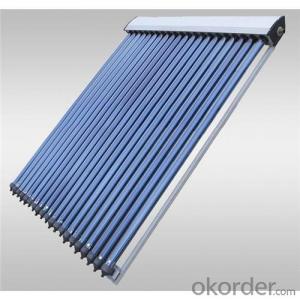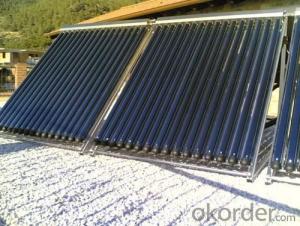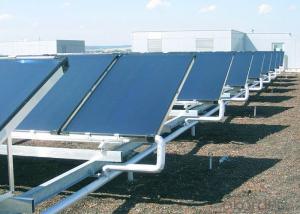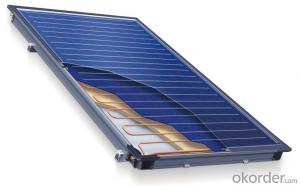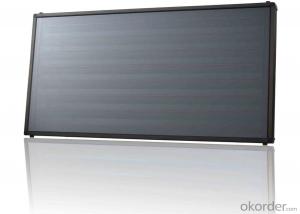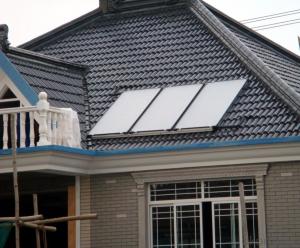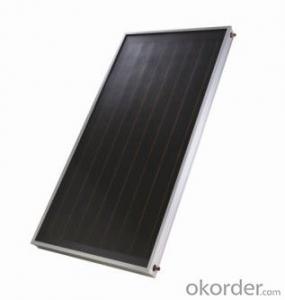Aet Solar Collectors - 18 Tubes High Efficiency Solar Pipes
- Loading Port:
- China main port
- Payment Terms:
- TT OR LC
- Min Order Qty:
- 5 set
- Supply Capability:
- 10000 set/month
OKorder Service Pledge
OKorder Financial Service
You Might Also Like
Specification
manifold (inner) | red copper |
manifold (exterior) | aluminum alloy |
glass tube dimensions | 58mm * 1800mm |
daily efficiency | ≥55% |
heat preservation | 72 hours |
hail resistance | 25mm |
max pressure | 7 bar |
coating of vacuum tube | ALN/AIN-SS/CU |
heat pipe | anti-freezing > -35 degree |
certificate | Solar Keymark, EN12975,SRCC |
Serious Product
Models | L*W*H mm | Vacuum tube | Power output | Efficiency | Header mm | Frame | container loading 20FT/40HQ sets | Gross Weight kg |
SHC-8 | 1917*910*133 | 58*1800*8pcs | 939W | 0.668 | Φ35/1.0 | AL alloy | 185/445 | 27 |
SHC-10 | 1917*1130*133 | 58*1800*10pcs | 1189W | 159/385 | 33 | |||
SHC-12 | 1917*1350*133 | 58*1800*12pcs | 1440W | 149/358 | 40 | |||
SHC-15 | 1917*1680*133 | 58*1800*15pcs | 1815W | 120/290 | 49 | |||
SHC-18 | 1917*2010*133 | 58*1800*18pcs | 2191W | 100/242 | 59 | |||
SHC-20 | 1917*2230*133 | 58*1800*20pcs | 2442W | 87/210 | 66 | |||
SHC-22 | 1917*2450*133 | 58*1800*22pcs | 2692W | 83/202 | 72 | |||
SHC-24 | 1917*2670*133 | 58*1800*24pcs | 2943W | 77/188 | 79 |
Packaging & Delivery
Packaging Details: | Exporting Carton with big foaming protection |
Delivery Detail: | In 10-15 days |
Loading Quantity
Model | Tube | Tube Q.T.Y | Loading Q.T.Y/40HQ |
GSC15 | 58*1800mm | 15pcs | 315sets |
GSC18 | 58*1800mm | 18pcs | 265sets |
GSC20 | 58*1800mm | 20pcs | 248sets |
GSC22 | 58*1800mm | 22pcs | 225sets |
GSC25 | 58*1800mm | 25pcs | 200sets |
GSC30 | 58*1800mm | 30pcs | 168sets |
Details of solar collector:
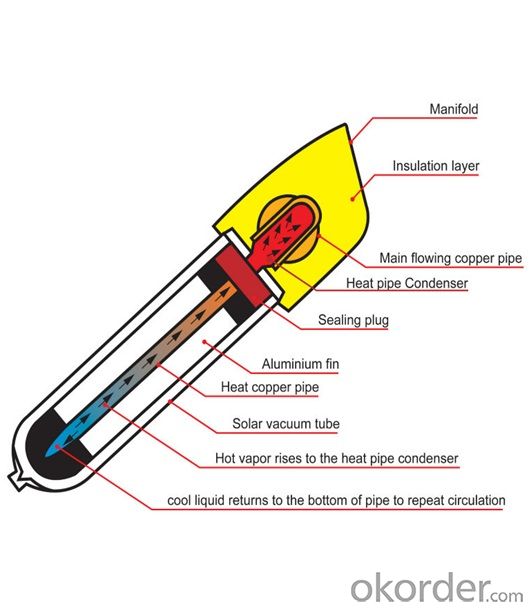
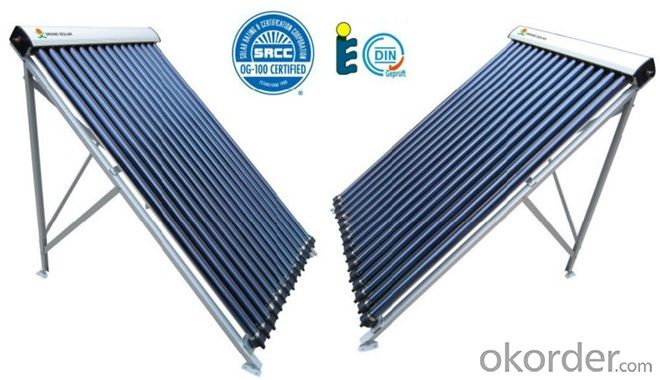

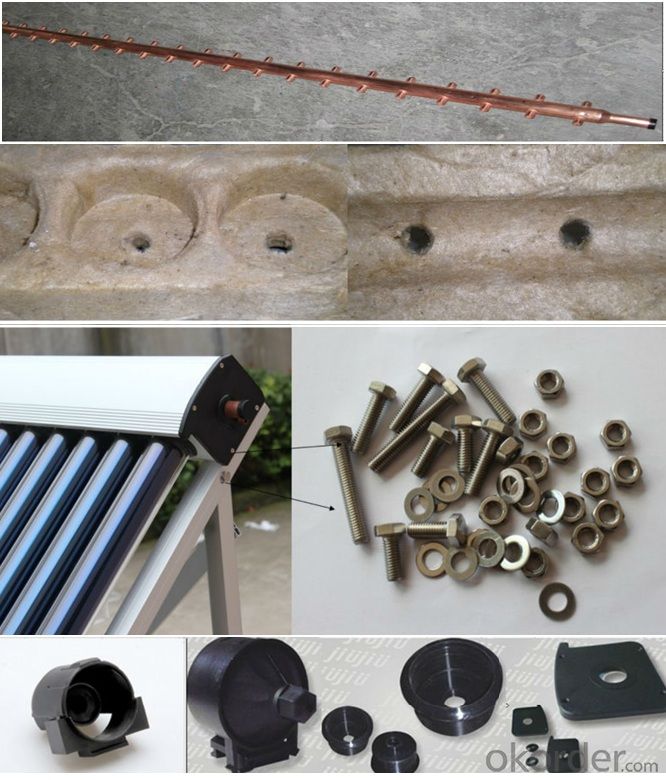
- Q: Can solar collectors be used in trains?
- Yes, solar collectors can be used in trains. Solar panels can be installed on the rooftops of trains to capture sunlight and convert it into electricity. This electricity can be used to power various onboard systems such as lighting, air conditioning, or even traction in some cases. Solar collectors provide a sustainable and renewable energy source, helping to reduce the reliance on traditional fossil fuels and decrease the carbon footprint of train transportation.
- Q: Can solar collectors be used in areas with heavy snowfall?
- Yes, solar collectors can be used in areas with heavy snowfall. However, it is important to take certain precautions to ensure their effectiveness. Snow can reduce the efficiency of solar collectors by blocking sunlight, so it is necessary to regularly clear the snow from the surface of the collectors. Additionally, installing the collectors at an angle that allows for snow to slide off easily can also help maximize their performance in snowy conditions.
- Q: What is the ideal location for installing solar collectors?
- The ideal location for installing solar collectors is an area that receives ample sunlight throughout the day, typically facing south or southwest to maximize exposure to the sun's rays. Additionally, a location with minimal shading from trees or buildings is preferred to ensure maximum solar energy absorption.
- Q: Can solar collectors be used in areas with limited access to storage solutions?
- Yes, solar collectors can be used in areas with limited access to storage solutions. Solar collectors primarily generate electricity when the sun is shining, which can be directly used for immediate energy needs in such areas. While storage solutions like batteries are typically used to store excess energy for later use, the absence of storage options does not prevent the direct use of solar energy as long as there is sunlight available.
- Q: Can solar collectors be used in scientific research?
- Yes, solar collectors can be used in scientific research. They can be utilized to capture and convert solar energy for various experimental purposes, such as studying the effects of solar radiation on different materials or organisms, conducting solar energy efficiency experiments, or analyzing the performance of solar-powered devices. Solar collectors allow researchers to harness and control solar energy, providing valuable data and insights in various scientific fields.
- Q: How do solar collectors compare to traditional heating methods in terms of efficiency?
- Solar collectors outperform traditional heating methods when it comes to converting energy. Fossil fuel-based systems, for example, rely on burning fuels to produce heat, resulting in energy loss through combustion byproducts. In contrast, solar collectors directly convert sunlight into heat energy, minimizing energy loss and maximizing efficiency. Not only are solar collectors more efficient in terms of energy conversion, but they can also be more cost-effective. Unlike traditional heating methods that require ongoing fuel purchases, solar energy is readily available and free, leading to reduced long-term costs. Additionally, solar collectors demand less maintenance compared to traditional heating systems, resulting in lower operational costs. It is important to consider that the effectiveness of solar collectors can be influenced by various factors, including the collector's size, orientation, insulation level, and climate conditions. Nevertheless, advancements in solar technology have greatly enhanced the efficiency of solar collectors over time, making them an increasingly attractive and effective alternative to traditional heating methods.
- Q: Can solar collectors be used for heating food processing plants?
- Yes, solar collectors can be used for heating food processing plants. Solar thermal technology can be employed to generate heat for various industrial processes, including food processing. Solar collectors capture sunlight and convert it into thermal energy, which can then be used to heat water or other fluids. This heated fluid can be utilized for various applications in food processing plants, such as pasteurization, sterilization, drying, or heating water for cleaning purposes. Implementing solar collectors in food processing plants can help reduce reliance on fossil fuels and decrease greenhouse gas emissions, making it a sustainable and environmentally friendly heating solution.
- Q: Can solar collectors be used in combination with heat pumps?
- Yes, solar collectors can be used in combination with heat pumps. This combination is often referred to as a solar thermal heat pump system. In this setup, solar collectors are used to capture thermal energy from the sun and transfer it to a heat pump. The heat pump then amplifies the captured heat and transfers it to a space heating or water heating system. By combining solar collectors with heat pumps, the system becomes more efficient and sustainable. The solar collectors provide an initial source of renewable energy, reducing the reliance on fossil fuels. The heat pump amplifies and enhances this energy, maximizing the overall efficiency of the system. This combination is particularly beneficial in areas with varying weather conditions. During sunny days, the solar collectors can provide a significant amount of thermal energy, reducing the load on the heat pump. On cloudy or less sunny days, the heat pump can compensate for the lower solar input by using its own energy efficiency to maintain the desired temperature. Furthermore, the integration of solar collectors with heat pumps can also provide benefits in terms of cost savings. The solar energy captured by the collectors can offset the electricity consumption of the heat pump, leading to reduced energy bills. In summary, using solar collectors in combination with heat pumps is a viable and effective solution for harnessing renewable energy and providing efficient heating and hot water systems. This combination offers both environmental and economic benefits, making it an attractive option for homeowners and businesses alike.
- Q: How do solar collectors affect the resale value of a property?
- Solar collectors can positively impact the resale value of a property. They are considered a valuable and desirable feature as they provide renewable energy and reduce electricity costs. Potential buyers are often willing to pay more for a property equipped with solar collectors, making it a wise investment that can enhance the overall resale value.
- Q: Are there any financial incentives for installing solar collectors?
- Yes, there are several financial incentives for installing solar collectors. These include federal tax credits, state and local incentives, grants, and rebates. Additionally, solar collectors can significantly reduce energy bills, providing long-term savings.
Send your message to us
Aet Solar Collectors - 18 Tubes High Efficiency Solar Pipes
- Loading Port:
- China main port
- Payment Terms:
- TT OR LC
- Min Order Qty:
- 5 set
- Supply Capability:
- 10000 set/month
OKorder Service Pledge
OKorder Financial Service
Similar products
Hot products
Hot Searches
